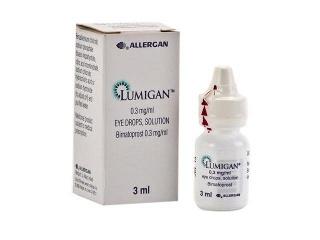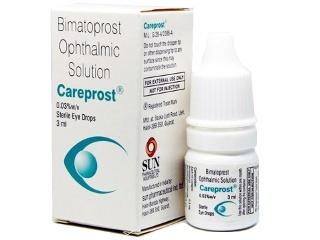Bimat (Bimatoprost 0.03%)
Bimat eye drops are used by patients who have been diagnosed with intraocular high pressure, a state which can lead to glaucoma. Left untreated, glaucoma can lead to blindness. By reducing intraocular pressure, the risk of blindness associated with this condition is drastically reduced.
Order Bimatoprost 3 ml no prescription
- 1 bottle – $36.99 per bottle – $36.99 Add to cart
- 2 bottles – $32.99 per bottle – $65.99 Add to cart
- 3 bottles – $31.00 per bottle – $92.99 Add to cart
- 4 bottles – $30.25 per bottle – $120.99 Add to cart
- 6 bottles – $29.00 per bottle – $173.99 Add to cart
Bimatoprost Common use
The active ingredient in Bimat eye drops is Bimatoprost.
Your eye contains a watery liquid that serves to feed the interior of the eye. Constantly, this liquid is drained out of the eye, with a freshly made one replacing it. If the draining process is not quick enough, this leads to the rise of intraocular pressure. Bimatoprost works by reducing fluid levels and raising the quantity of fluid that is drained from the eye, resulting in a drop in the intraocular pressure.
Dosage and direction
Bimat eye drops should be applied once, daily, to the eye. You do not have to apply it to both eyes, only to the eye that needs treatment for a diagnosed case of glaucoma or high intraocular pressure. The preferred time for applying the drug is in the evening.
If Bimat eye drops are used with another type of eye medicine, the time you should wait between the two is fifteen minutes.
To correct way to apply the Bimat eye drops is by first removing your contact lenses, then squeezing a few drops into your eye. After you have done this, you need to proceed to spread the liquid all over the eye by slowly closing and reopening it.
Bimatoprost Precautions
Bimatoprost 0.03% is a medication primarily used to treat hypotrichosis (inadequate or not enough eyelashes) by promoting the growth of longer, thicker, and darker eyelashes. It is also used to treat glaucoma, a condition characterized by increased pressure in the eye, by reducing intraocular pressure.
When considering drug interactions with bimatoprost 0.03%, it’s important to note that it is primarily used as an ophthalmic solution (eye drops) for the treatment of glaucoma and not for eyelash growth. However, it is the same active ingredient used in eyelash growth products, such as Latisse.
Bimatoprost interaction
Here are some key points regarding drug interactions with bimatoprost 0.03%:
- Eye Medications: Bimatoprost eye drops may interact with other eye medications, especially those used to treat glaucoma or other eye conditions. Combining bimatoprost with other eye drops containing prostaglandin analogs (such as latanoprost, travoprost, or tafluprost) may increase the risk of side effects or reduce the effectiveness of treatment.
- Contact Lenses: Bimatoprost eye drops may contain preservatives that can be absorbed by soft contact lenses. If you wear contact lenses, remove them before instilling bimatoprost eye drops and wait at least 15 minutes before reinserting them to avoid potential interactions.
- Systemic Medications: Bimatoprost eye drops are applied topically to the eye and are not expected to have significant systemic absorption when used as directed. Therefore, interactions with systemic medications are unlikely.
- Cosmetic Products: If using bimatoprost for eyelash growth (e.g., Latisse), there may be interactions with cosmetic products applied to the eyes or eyelashes. It’s essential to avoid applying other eye products, such as eye drops or ointments, concurrently with bimatoprost, as they may interfere with its absorption or effectiveness.
- Pregnancy and Breastfeeding: The safety of bimatoprost during pregnancy and breastfeeding has not been established. If you are pregnant, planning to become pregnant, or breastfeeding, consult your healthcare provider before using bimatoprost.
It’s crucial to inform your healthcare provider about all medications, supplements, and herbal products you are taking before using bimatoprost eye drops or other formulations. This includes prescription and over-the-counter medications, as well as vitamins and dietary supplements. Your healthcare provider can provide personalized advice and guidance regarding potential drug interactions with bimatoprost based on your individual medical history and current medications.
Bimatoprost side effect
Some of the most common side effects of this drug are mostly harmless and can include: irritation in the eyes, burning sensation, redness, stinging, itching, watery eyes, and sometimes discoloration of the iris.
Other side effects, which are more serious, include headaches, photosensitivity, photophobia, dry eyes, blurred vision, and swollen eyelids.
It is preferred that you keep the schedule prescribed by your physician, but in the event that you miss a dose, continue using it as you normally do, do not double the dose.
Overdose
Symptoms of overdose may include sensitivity to light and pink eyes. If this is the case, seek immediate medical attention.





